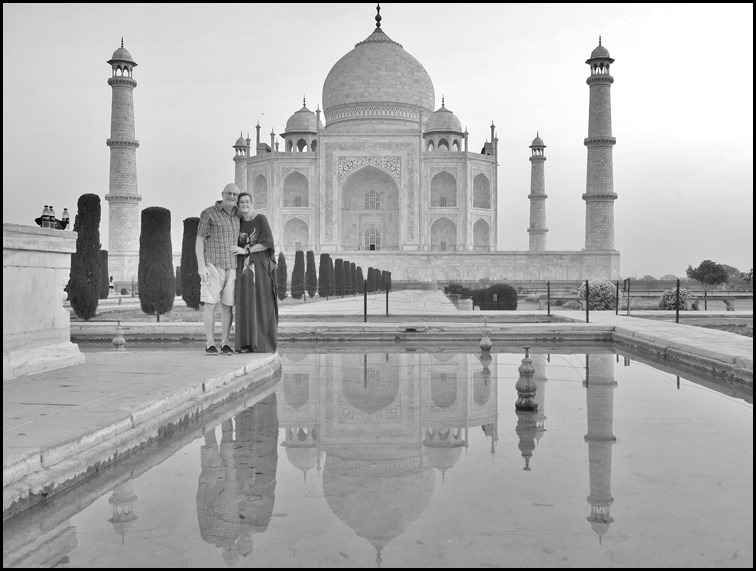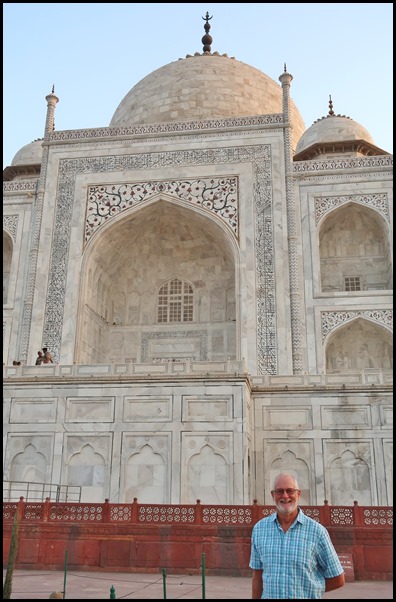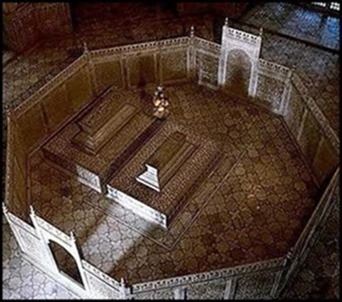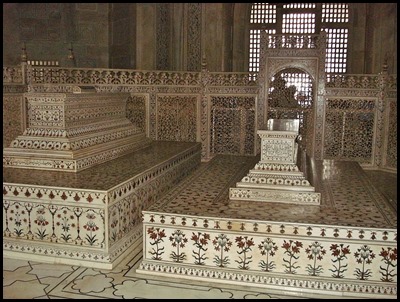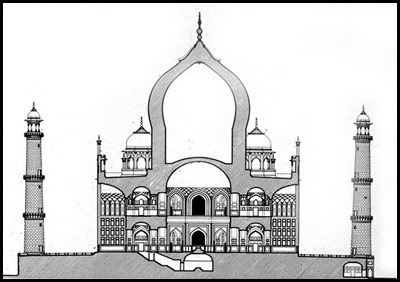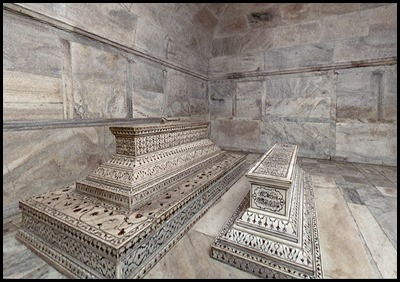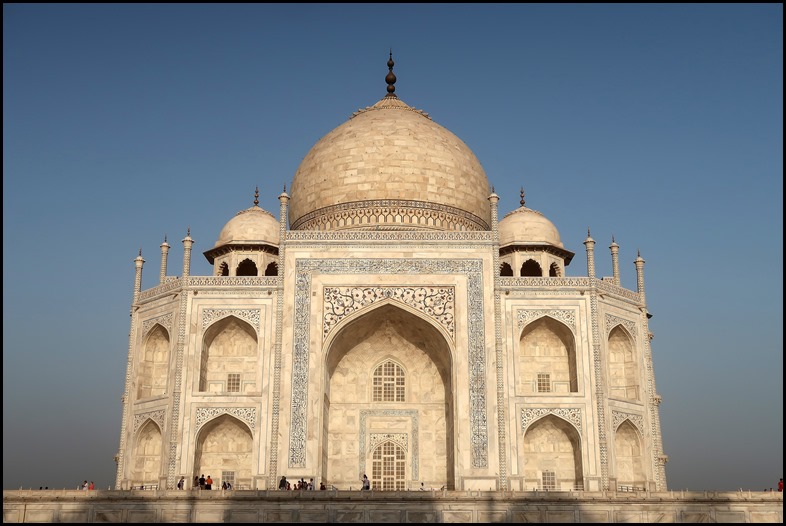Mumtaz Mahal

|
Mumtaz
Mahal
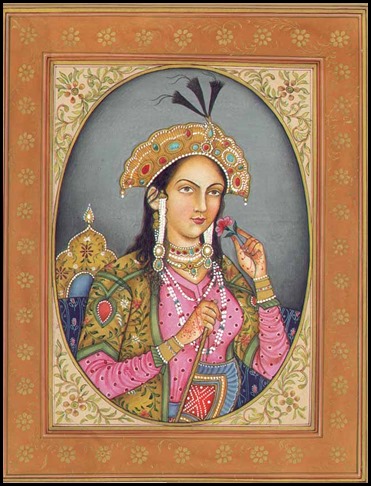 The Taj Mahal Website says of Mumtaz Mahal: Shah Jahan who built the Taj Mahal, a
wondrous monument built in dedication to love, beauty, and life of Mumtaz Mahal,
had succeeded in his lifetime his dire wish to immortalize the name of Mumtaz
Mahal, his third wife (Wiki says second). Such is the esteem of Mumtaz
Mahal that she is known by one and all, who've ever heard of Taj Mahal. Born in
1593 as Arjumand Banu Begum, she was the daughter of Abdul Hasan Asaf Khan and a
princess from the Persian nobility. So enthralling was her beauty that Shah
Jahan (then Prince Khurram) fell in love with her at the first sight. It was in
1607 that she was betrothed to Prince Khurram and soon became the unquestionable
love of his life. Five years later in 1612, their marriage was solemnized and
from then on, started one of the most popular love stories of the world.
Although she was one of the three wives of Shah Jahan, she was his favorite. He
even bestowed her with the name Mumtaz Mahal meaning "Jewel of the Palace", and
the highest honor of the land - the royal seal, Mehr
Uzaz.
 Our first glance from The Great
Gate at six minutes to six in the morning.
Mumtaz
Mahal had a very deep and loving marriage with Shah Jahan. Even during her
lifetime, poets would extol her beauty, gracefulness and compassion. She was his
trusted companion and traveled with him all over the Mughal Empire. Although
Mumtaz was one amongst the three wives Shah Jahan had had, other two being
Akbarabadi Mahal and Kandahari Mahal, according to the official court chronicler
Qazwini, the relationship with his other wives "had nothing more than the status
of marriage. The intimacy, deep affection, attention and favor which His Majesty
had for the Cradle of Excellence (Mumtaz) exceeded by a thousand times what he
felt for any other". It is believed that she was the perfect wife and portrayed
no aspirations of political power. Apart from counseling and supporting her
husband, and playing the role of a lovable wife to Emperor Shah Jahan, it is
believed that she also watching elephants and combat fights performed for the
court and even devoted some time to a riverside garden in
Agra.
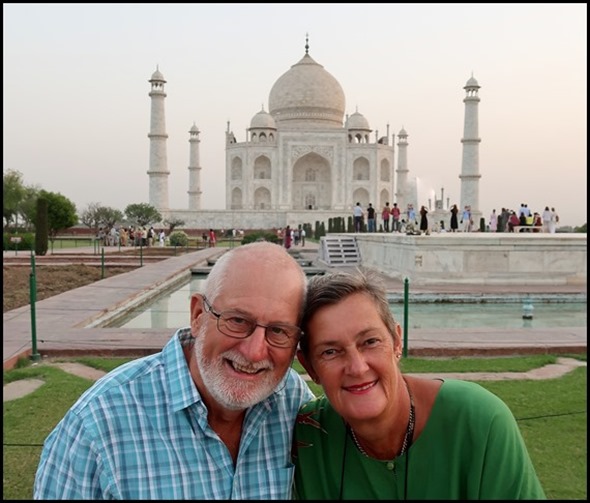 Our
romantic pose.
By all accounts, Shah Jahan was so taken with Mumtaz that he showed little interest in exercising his polygamous rights with his two other wives, other than dutifully siring a child with each. According to the official court chronicler, Motamid Khan, as recorded in his Iqbal Namah-e-Jahangiri, the relationship with his other wives "had nothing more than the status of marriage. The intimacy, deep affection, attention and favour which Shah Jahan had for Mumtaz exceeded what he felt for his other wives." Likewise, Shah Jahan's historian Inayat Khan commented that 'his whole delight was centred on this illustrious lady [Mumtaz], to such an extent that he did not feel towards the others (i.e. his other wives) one-thousandth part of the affection that he did for her.
Wiki says: Mumtaz Mahal died from postpartum haemorrhage in Burhanpur on the 17th of June 1631 while giving birth to her fourteenth child (the baby - a daughter called Gauhar Ara Begum lived to be 74), after a prolonged labour of about thirty hours. She had been accompanying her husband while he was fighting a campaign in the Deccan Plateau. Her body was temporarily buried at Burhanpur in a walled pleasure garden known as Zainabad originally constructed by Shah Jahan's uncle Danival on the bank of the Tapti River. The contemporary court chroniclers paid an unusual amount of attention to Mumtaz Mahal's death and Shah Jahan's grief at her demise. In the immediate aftermath of his bereavement, the emperor was reportedly inconsolable. Apparently after her death, he went into secluded mourning for a year. When he appeared again, his hair had turned white, his back was bent, and his face worn. Mumtaz's eldest daughter, Jahanara Begum, gradually brought her father out of grief and took her mother's place at court. Mahal's personal fortune (valued at ten million rupees) was divided by Shah Jahan between Jahanara Begum, who received half and the rest of her surviving children. Burhanpur was never intended by her husband as his wife's final resting spot. As a result, her body was disinterred in December 1631 and transported in a golden casket escorted by her son Shah Shuja and the deceased empress's head lady-in-waiting back to Agra. There it was interred in a small building on the banks of the Yamuna River. Shah Jahan stayed behind in Burhanpur to conclude the military campaign that had originally brought him to the region. While there, he began planning the design and construction of a suitable mausoleum and funerary garden in Agra for his wife. It was a task that would take twenty-two years to complete the Taj Mahal – a name the Shah never used.
No photographs are allowed inside – seen from above and from the entrance to the mausoleum (pictures taken from Taj Mahal website – with thanks) – Mumtaz Mahal (centre and holding perfect symmetry), the Shah to the left (and unbalancing the symmetry). Visitors can walk around these empty cenotaphs and enjoy the delicate decorations on the exquisite screens.
To finish the story and reunite Shah Jahan with Mumtaz Mahal: When Shah Jahan became ill in 1658, Dara Shukoh (Mumtaz Mahal's eldest son) assumed the role of regent in his father's stead, which swiftly incurred the animosity of his brothers. Upon learning of his assumption of the regency, his younger brothers, Shuia, Viceroy of Bengal, and Muraf Baksh, Viceroy of Gujarat, declared their independence, and marched upon Agra in order to claim their riches. Aurangzeb, the third son, and ablest of the brothers], gathered a well-trained army and became its chief commander. He faced Dara's army near Agra and defeated him during the Battle of Samugarh. Although Shah Jahan fully recovered from his illness, Aurangzeb declared him incompetent to rule and put him under house arrest in Agra Fort. Jahanara Begum Sahib, Mumtaz Mahal's first daughter, voluntarily shared his 8-year confinement and nursed him in his dotage. In January 1666, Shah Jahan fell ill. Confined to bed, he became progressively weaker until, on the 22nd of January, he commended the ladies of the imperial court, particularly his consort of later years Akbarabadi Mahal, to the care of Jahanara. After reciting the Kal’ma (Laa ilaaha ill allah) and verses from the Quran, Shah Jahan died, aged 74.
The coffins are in the underground crypt (white area below the Taj Mahal). Only opened once a year - we have relied on a picture taken in 2007 by William Donelson – with grateful thanks. The Shah and his lady, together once more.
Shah Jahan's chaplain Sayyid Muhammad Qanauii and Kazi Qurban of Agra came to the fort, moved his body to a nearby hall, washed it, enshrouded it and put it in a coffin of sandalwood. Princess Jahanara had planned a state funeral which was to include a procession with Shah Jahan's body carried by eminent nobles followed by the notable citizens of Agra and officials scattering coins for the poor and needy. Aurangzeb refused to accommodate such ostentation. The body was taken to the Taj Mahal and was interred there next to the body of his beloved wife Mumtaz Mahal.
ALL IN ALL NO GREATER SHOW OF LOVE A VERY ROMANTIC STORY
|
